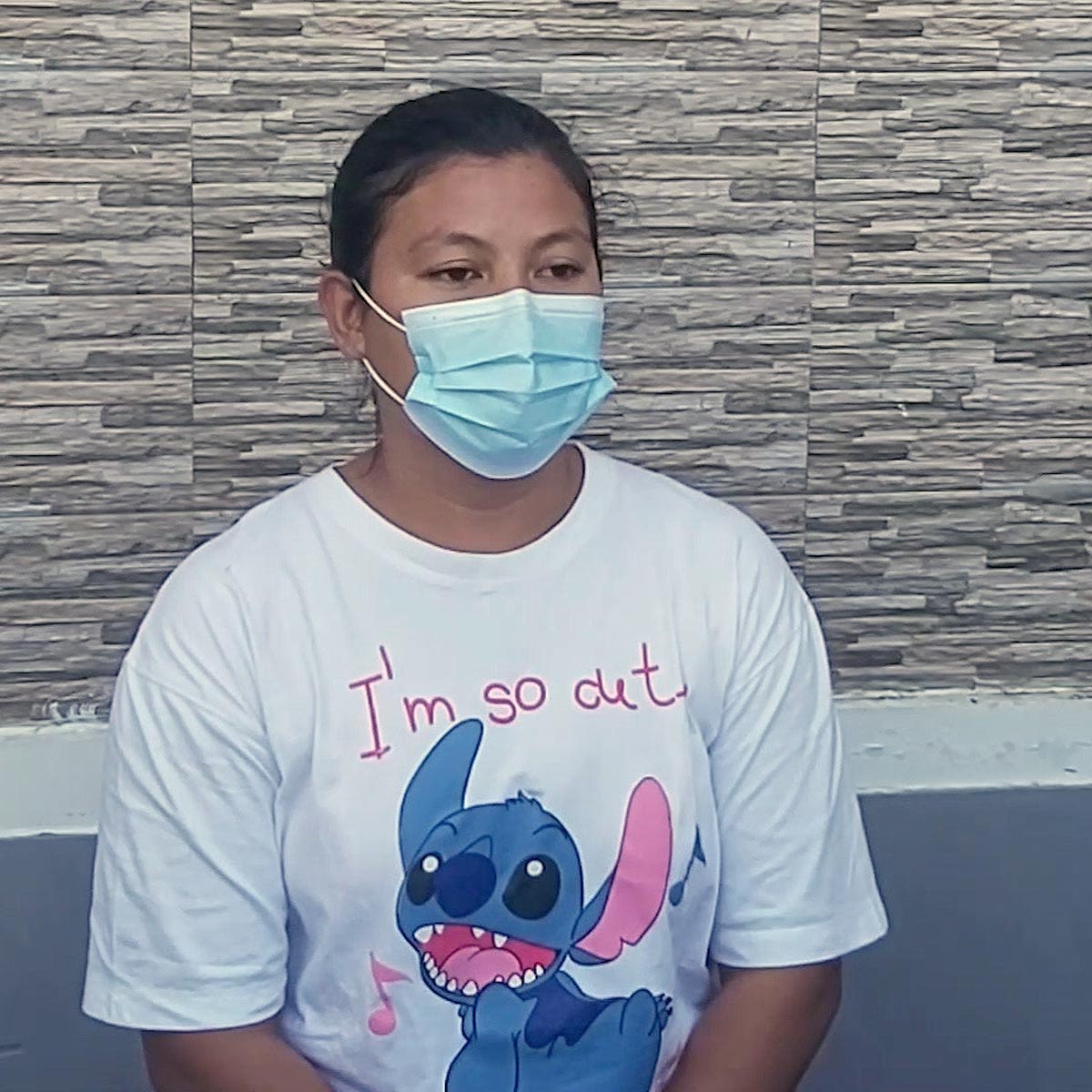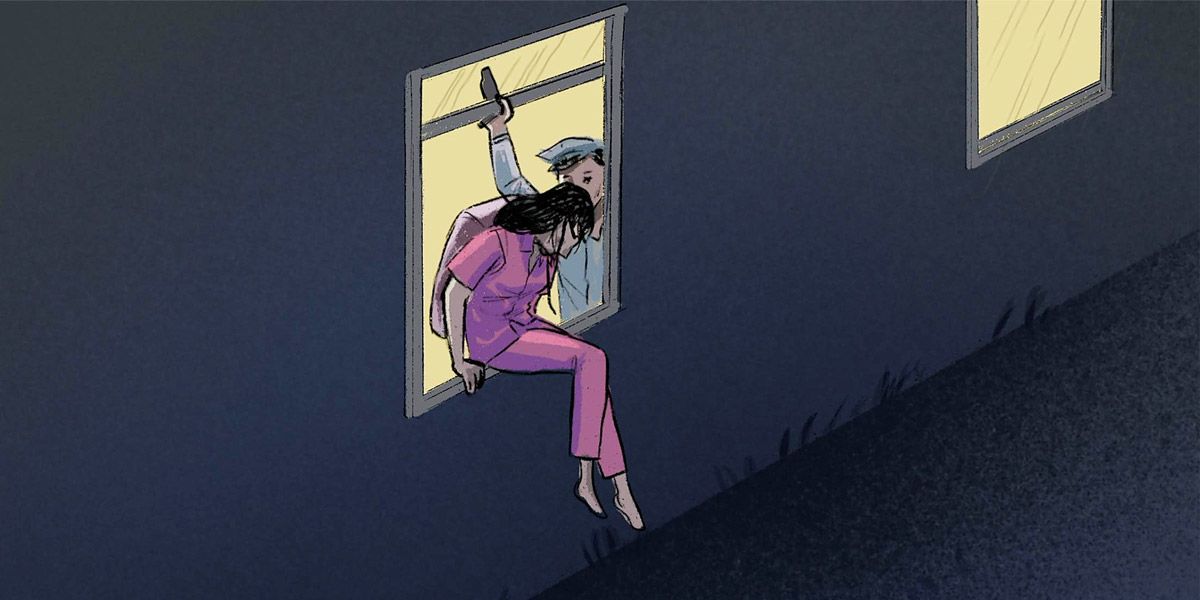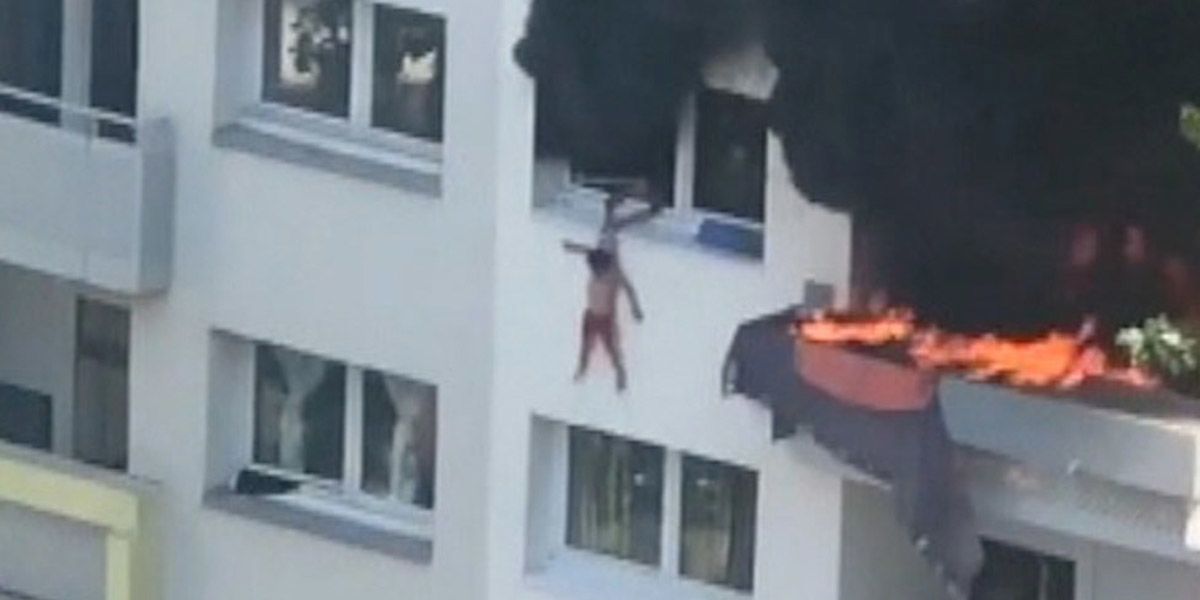The shooting of a
young protester


The shooting of a young protester
By Christopher Giles and Jack Goodman
“Police came forward with trucks. Protesters drew back. We were watching from the side of the road.”
Burmese protester Mya Tha Toe Nwe describes the moment just before her sister was shot in the back of the head last week in Myanmar’s capital Nay Pyi Taw.
By Christopher Giles and Jack Goodman
“Police came forward with trucks. Protesters drew back. We were watching from the side of the road.”
Burmese protester Mya Tha Toe Nwe describes the moment just before her sister was shot in the back of the head last week in Myanmar’s capital Nay Pyi Taw.
This story was first published on 10 February and has been updated.
Mya Thwe Thwe Khaing was taken to hospital in a critical condition, and 10 days later her family announced that she had died. She had turned 20 while in hospital.
The young woman’s shooting has become a defining moment in Myanmar’s fight for democracy following the military coup on 1 February.
Footage of the incident, and a photo that appears to show her bloodied and unconscious afterwards, have been widely shared on social media.

Mya Thwe Thwe Khaing
Many Burmese online are outraged at the first protester to die since the start of the anti-coup demonstrations, and the UN has expressed concern at the actions taken by security forces.
The army says that only rubber projectiles, not real bullets, were used during the protests and that the police are investigating.
So what do we know about the woman in the video? What was she doing at the time she was shot, and were bullets fired at protesters?
Looking at the photos and video shared on social media, and by speaking to forensics experts, we’ve examined the evidence around the shooting.
This story was first published on 10 February and has been updated.
Mya Thwe Thwe Khaing was taken to hospital in a critical condition, and 10 days later her family announced that she had died. She had turned 20 while in hospital.
The young woman’s shooting has become a defining moment in Myanmar’s fight for democracy following the military coup on 1 February.
Footage of the incident, and a photo that appears to show her bloodied and unconscious afterwards, have been widely shared on social media.

Mya Thwe Thwe Khaing
Many Burmese online are outraged at the first protester to die since the start of the anti-coup demonstrations, and the UN has expressed concern at the actions taken by security forces.
The army says that only rubber projectiles, not real bullets, were used during the protests and that the police are investigating.
So what do we know about the woman in the video? What was she doing at the time she was shot, and were bullets fired at protesters?
Looking at the photos and video shared on social media, and by speaking to forensics experts, we’ve examined the evidence around the shooting.

‘That’s when she was shot’
A video of the shooting shared widely online shows a group of people taking cover by a bus shelter. In the group a woman is standing wearing a motorcycle helmet and a red top.
Police equipped with riot shields and batons are visible on the nearby road. As the security forces begin spraying water and moving forward, multiple gun shots can be heard on the video.
Immediately afterwards, footage shows the woman in the red top, who had her back turned to the police, fall suddenly to the ground.

Mya Thwe Thwe Khaing's sister Mya Tha Toe Nwe
“As you can see it online, we were hidden in the back. When I heard the gunfire, I thought they were shooting upwards,” her sister told BBC Burmese.
“That was when she was shot. I thought my sister fell down due to her anger. When people were calling for help and pulled off her helmet, I saw blood coming out of her head and realised that she was hit. Then the crowd took her away.”

Where did the shooting happen?
Taking the video of the shooting on its own, which is low-quality and from a limited angle, the location where the woman was shot isn’t immediately clear.
But by cross-referencing visual clues from billboards and road signs with other footage from the day, it’s possible to precisely pinpoint the incident.
Other footage we’ve looked at shows police moving down Taungnyo Road, being met by a mass of protesters on the road roughly in line with the bus shelter.
The area in the footage is near Thapyaygone Market, which sells clothes, food and homeware.
It’s also possible to estimate when the shooting took place - between 12:00 and 13:30 local time - from the angle of the shadows of structures in the footage.
‘That’s when she was shot’
A video of the shooting shared widely online shows a group of people taking cover by a bus shelter. In the group a woman is standing wearing a motorcycle helmet and a red top.
Police equipped with riot shields and batons are visible on the nearby road. As the security forces begin spraying water and moving forward, multiple gun shots can be heard on the video.
Immediately afterwards, footage shows the woman in the red top, who had her back turned to the police, fall suddenly to the ground.

Mya Thwe Thwe Khaing's sister Mya Tha Toe Nwe
“As you can see it online, we were hidden in the back. When I heard the gunfire, I thought they were shooting upwards,” her sister told BBC Burmese.
“That was when she was shot. I thought my sister fell down due to her anger. When people were calling for help and pulled off her helmet, I saw blood coming out of her head and realised that she was hit. Then the crowd took her away.”

Where did the shooting happen?
Taking the video of the shooting on its own, which is low-quality and from a limited angle, the location where the woman was shot isn’t immediately clear.
But by cross-referencing visual clues from billboards and road signs with other footage from the day, it’s possible to precisely pinpoint the incident.
Other footage we’ve looked at shows police moving down Taungnyo Road, being met by a mass of protesters on the road roughly in line with the bus shelter.
The area in the footage is near Thapyaygone Market, which sells clothes, food and homeware.
It’s also possible to estimate when the shooting took place - between 12:00 and 13:30 local time - from the angle of the shadows of structures in the footage.
Social media users have also shared images of a specific “Dunk” model of helmet made by a company called Index, on which they point out what appears to be a bullet hole. The hole is on the back left, just above the branding, matching the footage of the shooting.
We showed the image to forensics expert Dr Kate Hewins, who says it’s possible the object penetrated the helmet shell, with the helmet material partially closing back into the hole after the object had passed through.

The hole in the helmet
A rubber projectile, she says, would not have been able to have that effect.
“From the images provided, it is highly unlikely that a commercially available rubber bullet would penetrate this helmet as seen in the image.”
The blood on the inside of the helmet in another image shared on social media lines up with the indentation on the outside, suggesting that the helmet was penetrated. The evidence available suggests that in this instance it was caused by a bullet, says Dr Hewins.
“I don’t see how it could have come from anything else and it’s highly unlikely to have been a less lethal munition.
“The manner in which she falls suggests a small arms ammunition shot to the head, rather than an impact/shock that would result from a non-lethal projectile.”
There is nothing in the video that suggests the bullet ricocheted off another surface before striking the woman, though this cannot be ruled out. Rebounding off something would have reduced the velocity of the impact. “It appears to be a direct impact,” says Dr Hewins.
An unnamed doctor who spoke to Reuters at the Nay Pyi Taw hospital, said a bullet had penetrated the back of the injured woman's head.
Social media users have also shared images of a specific “Dunk” model of helmet made by a company called Index, on which they point out what appears to be a bullet hole. The hole is on the back left, just above the branding, matching the footage of the shooting.
We showed the image to forensics expert Dr Kate Hewins, who says it’s possible the object penetrated the helmet shell, with the helmet material partially closing back into the hole after the object had passed through.

The hole in the helmet
A rubber projectile, she says, would not have been able to have that effect.
“From the images provided, it is highly unlikely that a commercially available rubber bullet would penetrate this helmet as seen in the image.”
The blood on the inside of the helmet in another image shared on social media lines up with the indentation on the outside, suggesting that the helmet was penetrated. The evidence available suggests that in this instance it was caused by a bullet, says Dr Hewins.
“I don’t see how it could have come from anything else and it’s highly unlikely to have been a less lethal munition.
“The manner in which she falls suggests a small arms ammunition shot to the head, rather than an impact/shock that would result from a non-lethal projectile.”
There is nothing in the video that suggests the bullet ricocheted off another surface before striking the woman, though this cannot be ruled out. Rebounding off something would have reduced the velocity of the impact. “It appears to be a direct impact,” says Dr Hewins.
An unnamed doctor who spoke to Reuters at the Nay Pyi Taw hospital, said a bullet had penetrated the back of the injured woman's head.

Who fired the shot?
From the video of the shooting, the woman is facing away from the police lines, and the angle at which the bullet hit her helmet is roughly consistent with a shot being fired from the direction of the police lines.
The incident sparked a social media manhunt, driven by the country’s young Facebook users. Much of the speculation and anger centred on a police officer pictured holding a sub-machine gun. The photo was taken by a Reuters photographer at the protest.
However, we can’t be certain who the officer is, or whether he fired on protesters. Photos also show he was not the only armed officer at the protest.
But social media users were determined to identify him.
Not long after the shooting, the names of two men emerged, both accused by social media users of being the armed police officer in the photo.
Family pictures from personal Facebook accounts were uploaded and shared thousands of times and “wanted” posters were created. One of the men named on social media said he’d been a victim of “fake news” and denied any involvement.
The other man’s Facebook page is no longer online. A single photo of him on Instagram has now attracted thousands of furious comments.
Martyr for the protesters
Even though the internet has been intermittent since the coup, protesters have become intensely active in sharing pro-democracy messages.
The image and footage of the shooting has been shared alongside popular hashtags such as #WhatsHappeningInMyanmar and #Feb9Coup.
The sharing of these images has prompted concern from international rights groups.
Human Rights Watch said, on analysing the footage of the shooting, that they observed “no actions by Mya Thwe Thwe Khaing in the video that would suggest she was engaged in or threatening violent acts, or had anything in her hands”.
The country’s security forces have a long history of using force to suppress protests.
But Mya Tha Toe Nwe says she is determined to go on, and has a message for fellow protesters. She told journalists:
“We ask all people to continue in this [movement against the regime] until we win.”

Credits:
Authors: Christopher Giles and Jack Goodman
Additional reporting from the BBC's Burmese Service and UGC team
Editors: Dan Isaacs and Hugo Williams
Online production: Paul Kerley and James Percy
Graphics: Lilly Huynh
Images: Getty Images, Reuters, Google and social media
Published 10 February 2021


